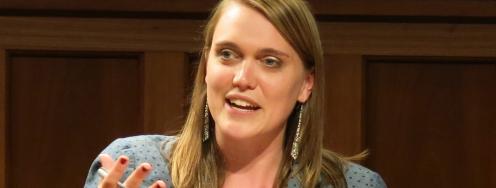The Iran Agreement is a major victory for U.S. national security. It stops an Iran Bomb; it stops an Iran War.
It is also a historic victory for diplomacy, even though tough hurdles lie ahead. President Barack Obama and Iranian President Hassan Rouhani should both feel proud of their accomplishment. Overcoming three decades of hostility, their negotiating teams forged an agreement that peacefully resolves what many considered the greatest nuclear proliferation threat in the world.
They prevailed over hard-liners who pushed for policies and positions that would dramatically increase the risk of war. Hard-line conservatives in Iran opposed any compromise with America. Neo-conservatives in this country insisted that only a military attack could eliminate a nascent nuclear threat. They threatened to start a conflict that would make the war in Iraq look like a warm up act.
That is why this deal negotiated by seven nations is a diplomatic triumph. It shrink-wraps an Iranian nuclear program that had been racing on a “superhighway” towards a bomb, as Colin Powell says. The accord cuts Iran’s nuclear complex down to a fraction of its current size, wraps it in the most stringent inspection regime ever negotiated and freezes it for 15 years. That, says Powell, is “remarkable.”
Over the next few months, Iran will rip out two-thirds of its centrifuges, with all their piping and wiring. It will ship out of the country 98 percent of its uranium stockpile. It will tear out the core of its plutonium reactor, drill it full of holes and fill it with concrete. It will be shackled with a state-of-the-art inspection program that for 25 years will track all Iran’s uranium from the time it leaves the mine until it is bottled in gas cylinders and stored under seal. It blocks all of Iran’s pathways to a bomb.
We harbor no illusions about the work of turning this piece of paper into reality on the ground. However, those who understand real world security challenges – generals and admirals, former Israeli security chiefs, former secretaries of state from both parties, nuclear scientists and nonproliferation experts – have praised this agreement. It has the firm support of our strongest European allies: the United Kingdom, France and Germany. Pope Francis said that full implementation of the agreement “will be a definitive step toward greater stability and security in the region.”
To succeed, however, the agreement had to withstand the most intense campaign ever mounted against a national security agreement. Some critics came to their position after a process of thoughtful, genuine reflection. Others did everything in their power to distort the merits of the deal in order to kill it. Political opponents of the accord outspent supporters by at least 10-1, including a $40 million ad campaign to scare off congressional support. Legislators who supported the agreement saw donors cancel fund-raisers. They were denounced for leading Jews “to the door of the oven.” They were bombarded with orchestrated calls, emails, fly-ins and hostile articles.
How did the agreement survive?
From his first day in office, President Barack Obama waged a dogged effort to block an Iranian bomb using all the tools at his disposal. With this accord, he achieved what Washington Post columnist David Ignatius calls “the most determined, strategic success of his presidency.” He was aided by the diplomatic proficiency of Secretary of State John Kerry, the nuclear expertise of Energy Secretary Ernie Moniz, and the political acumen of Leader Harry Reid in the Senate and Leader Nancy Pelosi in the House.
The president and congressional leaders always saw diplomacy as the best way to prevent an Iranian bomb. Over the past four years, their incredibly talented teams worked around the clock to negotiate and defend the deal. They faced relentless opponents. And they prevailed. But they were not alone. Arms control experts, regional experts, ethnic groups, peace advocates, military leaders and countless others also supported this historic agreement.
These groups and individuals were decisive in the battle for public opinion and as independent validators of the negotiated solutions. They all endorsed the deal, but they lacked a common platform – a network to exchange information and coordinate efforts.
Ploughshares Fund provided that network. Often, networks can make all the difference. Astronomers use a technique called interferometry to link together a cluster of relatively small telescopes so that, together, they can resolve distant objects that no single instrument could acquire. We built a network of over 85 organizations and 200 individuals in favor of a negotiated solution to the Iranian crisis. Together, they achieved a victory no single group could have secured.
All of our partners wanted to stop an Iranian bomb. They also wanted to stop an Iranian war. Many had been through the wrenching experience of 2003, when the tragedy of September 11 was used to twist intelligence estimates of Iraq’s weapons of mass destruction program, provide a false picture of imminent threat, and lure an entire nation into a costly, unnecessary war that led only to greater regional and global insecurity.
Now, many of the same people responsible for the greatest blunder in U.S. military history were trying to do it again, but with Iran. War is sometimes necessary to defend the nation. But not this time. Not for this reason.
So our network came together to sharpen its collective focus. We met and wrote and reasoned together. We pooled ideas, debated strategies, and forged a common effort. We partnered with like-minded foundations. By sharing information, reducing redundancies, collaborating where possible, and applying savvy digital organizing techniques, each partner strengthened the collective impact of the whole.
We credit this model of philanthropy - facilitating collective action through high-impact grantmaking - with creating the conditions necessary for supporters of the Iran agreement to beat the political odds.
Our effort to educate and inform the public and policymakers about the merits of the deal brought together Jewish-Americans and Iranian-Americans. We assembled peace groups and think tanks. We connected seasoned diplomats with social media mavens. And we provided funding with support from those who understood the urgency of securing this agreement. Ploughshares Fund raised and disbursed over $11 million in grants over the past five years. (A complete list of grants is available in our annual reports.) We shared investment strategies with sister foundations to ensure that critical voices supporting the agreement were heard loud and clear. And it worked.
For every claim denouncing the agreement, there was a calm, reasoned exposition of its security benefits. For every critic on cable news, there was an advocate answering. Those who stepped up to organize letters from scientists, military leaders, rabbis and experts found others to help them. Others produced ads, videos and educational panels. None were told what to do. All did what they deemed best. All found they had a robust, coordinated network to amplify their efforts.
Thanks to swift action by our leadership, staff, and vital outside supporters in the final hour, we surged funding into our network during the last few months of the campaign to counter the millions pouring in from billionaire deal opponents. They had more money, but we had the people. They had the scary TV ads, but we had the truth about the merits of the agreement. The town hall meetings in August that many feared would be the deal’s downfall turned into pro-deal rallies. Supporters outnumbered opponents, encouraging members of Congress to cast their vote in favor.
The campaign showed that with the right resources, the right vision and the right organization, determined citizens can work with government leaders to achieve what many thought was impossible. Collectively, we stopped Iran from getting a bomb. We stopped another unnecessary war in the Middle East. We demonstrated the power of diplomacy to accomplish what no military action could.
Together, we made history.
Now, we must sustain the victory we worked so hard to achieve. We will have to be every bit as resolute and as vigilant as the opponents of this peaceful agreement, who have promised to “use every tool” at their disposal to derail it. We will have to ensure that all the nations fulfill the terms of the accord. We will have to make sure that Iran does not exploit the agreement to engage in expanded regional misadventures.
The opportunities now presented by the agreement, however, go far beyond its substantial security benefits. The deal itself is a model for future nuclear agreements. It may be possible to enshrine the strict limits and stringent inspections procedures of the Iran agreement into global standards. Then, when “in 15 years Iran will leave one set of restraints,” says Delaware Senator Chris Coons, they would enter another: new global agreements toughened up to at least the standards of the Iran accord.
Even though preventing a nuclear-armed Iran was the direct objective of the diplomatic agreement, it may also be a gateway to other critical conversations. Iran should free the American prisoners they hold and let them come home. Iran could help end the bloodshed in Syria. The U.S. and Iran could coordinate on their shared strategic objectives of defeating ISIS, stabilizing Iraq, stabilizing Afghanistan and on other regional issues. We do not know if any of these conversations will bear fruit, but without the nuclear accord, such opportunities would have been impossible. We would be foolish not to explore them.
The fight for the Iran agreement is not done. The most difficult phase is over, yes.
But we should not hold any illusions: it will take vigilance and determination to sustain this victory.
The struggle for the future made possible by this accord has only just begun.
Joe Cirincione
President, Ploughshares Fund



